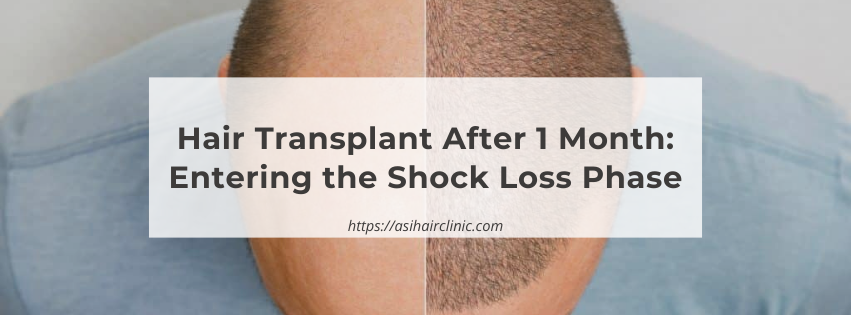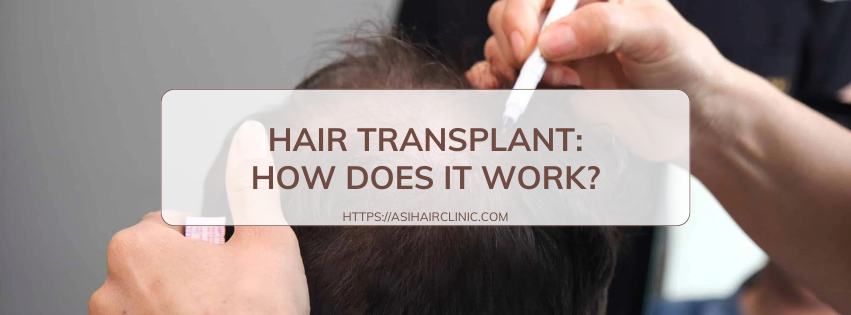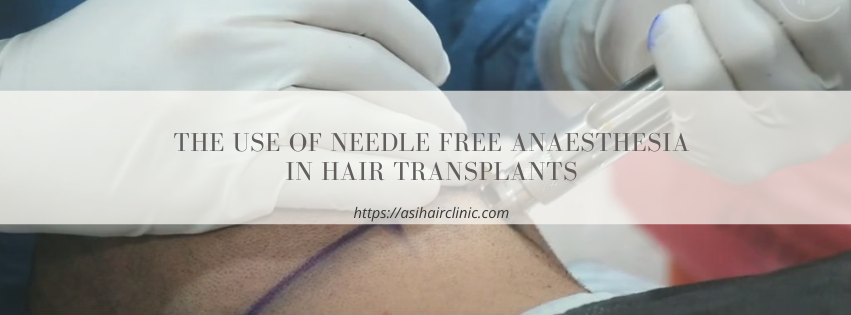FUE vs. FUT: What Type Of Hair Transplant Is Best For You?
Hair loss can be a distressing experience for many individuals, leading them to seek solutions to restore their confidence and aesthetics. One of the most effective methods of addressing hair loss is through a hair transplant. This medical procedure offers numerous techniques, with two of the most popular being Follicular Unit Extraction (FUE) and Follicular Unit Transplantation (FUT). Both have their unique advantages, drawbacks, and ideal candidates. Understanding the differences between these procedures can help you make an informed decision about which method aligns best with your individual needs.
1. An Overview of Hair Transplant Techniques
Understanding the different techniques available in hair restoration is essential for anyone considering a hair transplant. The two primary types-FUE and FUT-exhibit distinct methodologies and outcomes.
The choice between these methods often hinges on factors such as the extent of hair loss, the quality of donor hair, recovery time, and personal preferences regarding scarring and pain tolerance. Each procedure has its nuances that cater to varying patient needs.
In this section, we will delve into the foundational concepts of both techniques, outlining their key attributes, benefits, and considerations.
1.1. Defining FUE and Its Process
Follicular Unit Extraction (FUE) is a minimally invasive technique in which individual hair follicles are harvested from the donor area and transplanted to the balding or thinning areas of the scalp.
- Harvesting Hair Follicles In FUE, tiny circular incisions are made around each follicle to extract them without significant damage. This precise technique minimizes trauma to the surrounding tissues and promotes quicker healing.
- Transplanting Follicles Once harvested, the follicles are meticulously placed into the recipient sites, where they will eventually grow into natural-looking hair over time. The process requires a high level of skill and artistry to ensure the angles and densities mimic natural hair growth.
- Healing and Recovery The minimal invasiveness of FUE typically leads to a shorter recovery period compared to FUT. Many patients return to normal activities within days, as the small puncture wounds heal quickly and leave little to no visible scarring.
FUE is particularly appealing for those who desire an inconspicuous solution with less downtime and minimal visible scars.

1.2. Understanding FUT and Its Methodology
Follicular Unit Transplantation (FUT), sometimes referred to as strip harvesting, involves removing a strip of skin containing healthy hair follicles from the donor site.
- Strip Removal The surgeon carefully excises a narrow strip of tissue from the back of the scalp, where hair is usually denser. This strip is then divided into smaller units, allowing multiple follicles to be transplanted at once.
- Closure of the Donor Site After the strip is removed, the incision is stitched closed. This results in a linear scar, which may be hidden by existing hair but could become noticeable if the hair is cut short.
- Recovery Considerations While FUT can yield a higher number of grafts in a single session, it generally requires a longer recovery time compared to FUE. Patients may experience more discomfort and need to avoid strenuous activities for a week or two post-surgery.
FUT is often recommended for individuals with significant hair loss who require extensive coverage, as it allows for more grafts in one sitting.
1.3. Comparing FUE and FUT Outcomes
Both FUE and FUT can lead to successful hair restoration, but the outcomes may differ based on various factors, including the patient’s hair type, the expertise of the surgeon, and individual healing responses.
- Aesthetic Results Patients who opt for FUE often appreciate the natural look achieved due to the meticulous placement of individual follicles. On the other hand, FUT can also produce excellent results but may be influenced by the linear scar left behind.
- Graft Survival Rates Generally, both methods boast high graft survival rates when performed by skilled professionals. However, some studies suggest that FUT may have a slight edge in certain cases due to the preservation of the follicles during the strip removal process.
- Personal Experience Factors Ultimately, patient satisfaction can depend not only on the technique used but also on personal comfort levels, expectations, and trust in the healthcare provider. Open communication with the surgeon can significantly contribute to a positive outcome.
Choosing between FUE and FUT demands comprehensive consideration of these factors along with a clear understanding of one's specific needs and goals.
2. Factors to Consider When Choosing Between FUE and FUT
As prospective patients contemplate undergoing a hair transplant, it’s crucial to weigh various determinants that can influence the choice between FUE and FUT. Each method uniquely addresses individual circumstances, and understanding these factors can guide a more personalized treatment approach.
2.1. Assessing Hair Loss Patterns
One of the primary considerations when selecting between FUE and FUT revolves around the pattern of hair loss.
- Extent of Hair Loss Those experiencing advanced stages of baldness may benefit more from FUT due to the ability to harvest larger quantities of grafts in a single session. This can be advantageous for covering large areas effectively.
- Donor Area Quality Evaluating the density and health of the donor area is essential. Individuals with densely populated donor regions may find FUE suitable, while those with limited donor hair might lean toward FUT for maximizing the number of usable grafts.
- Future Hair Loss Potential Hair loss can progress over time, so it’s essential to consider future hair loss patterns. A consultation with a hair restoration specialist can provide insights into potential future treatments based on current loss levels.

2.2. Evaluating Personal Lifestyle and Preferences
Individual lifestyles and personal preferences play a significant role in determining the appropriate method for hair transplantation.
- Scarring Sensitivity Patients who prioritize minimal scarring and invasiveness may prefer FUE since it leaves tiny puncture marks rather than a linear scar. This aspect often appeals to those who favor short hairstyles or who may want to wear their hair very short in the future.
- Time Commitment and Recovery The recovery phase varies between the two methods. FUE usually entails a faster recovery, allowing individuals to resume normal activities sooner. Conversely, those who can manage a longer recovery period and wish to achieve maximum grafts at once may opt for FUT.
- Pain Tolerance Patients have varying thresholds for pain. FUE generally involves less discomfort post-procedure due to its minimally invasive nature, making it more suitable for those concerned about postoperative pain.
2.3. Financial Considerations
Cost is undeniably a significant factor influencing decisions regarding hair transplant options.
- Cost Differences Typically, FUE tends to be more expensive than FUT, primarily due to the labor-intensive nature of extracting individual follicular units. Understanding the financial implications of each procedure is important, especially if budget constraints exist.
- Long-term Investment Viewing the cost of a hair transplant as a long-term investment in self-esteem and confidence can sometimes justify the expenditure. Additionally, patients should consider future maintenance costs, especially if ongoing treatments might be required.
- Financing Options Many clinics offer financing plans to ease the burden of upfront costs. Exploring these options can provide greater access to hair restoration solutions without immediate financial pressure.
By carefully evaluating these factors, individuals can better understand which hair transplant technique resonates more closely with their needs and lifestyle, paving the way to a successful hair restoration journey.
3. The Role of the Surgeon in Hair Transplant Success
Regardless of whether one opts for FUE or FUT, the skill and experience of the surgeon significantly impact the outcome of the hair transplant.
3.1. Importance of Choosing a Qualified Surgeon
Selecting a well-qualified surgeon is paramount in ensuring desired results.
- Training and Credentials It’s essential to verify the surgeon's credentials, training, and experience in performing hair transplants. Specialized training in hair restoration can equip surgeons with the necessary skills to navigate complex cases and achieve optimal outcomes.
- Before-and-After Galleries Reviewing before-and-after galleries of past patients can provide insight into the surgeon's capabilities. A reputable surgeon will have a portfolio showcasing a variety of cases and results that align with your expectations.
- Patient Testimonials Reading reviews and testimonials can offer valuable perspectives on the surgeon's bedside manner, professionalism, and overall patient satisfaction. Engaging with former patients can also yield insights into their experiences throughout the process.
3.2. Postoperative Care and Follow-Up
Post-transplant care is a vital aspect of achieving successful results, regardless of the chosen method.
- Adhering to Instructions Following the surgeon's postoperative instructions is crucial for promoting healing and follicle survival. This may include recommendations for washing, avoiding sun exposure, and managing physical activity during the recovery phase.
- Regular Check-Ups Scheduling follow-up appointments allows the surgeon to monitor progress and address any concerns. These check-ups are instrumental in ensuring the healing process is proceeding as expected and that the transplanted hair is growing optimally.
- Managing Expectations Over Time Understanding the timeline for hair growth post-procedure can alleviate anxiety. It typically takes several months for results to fully materialize, so patience and adherence to aftercare instructions are essential.
Ultimately, the surgeon's expertise and the quality of pre- and post-operative care directly impact the long-term success of the hair transplant, making it imperative to invest time in researching and selecting the right professional for the procedure.
Conclusion
Deciding between FUE and FUT is a personal journey that requires careful consideration of numerous factors, including hair loss patterns, personal preferences, and financial situations. Both methods possess unique advantages and disadvantages, and the ultimate choice depends on what aligns best with your individual needs.
By arming yourself with knowledge and taking a proactive approach, you can make an informed decision about which hair transplant method is best suited for you, ultimately restoring your confidence and enhancing your quality of life.
LATEST POSTS








